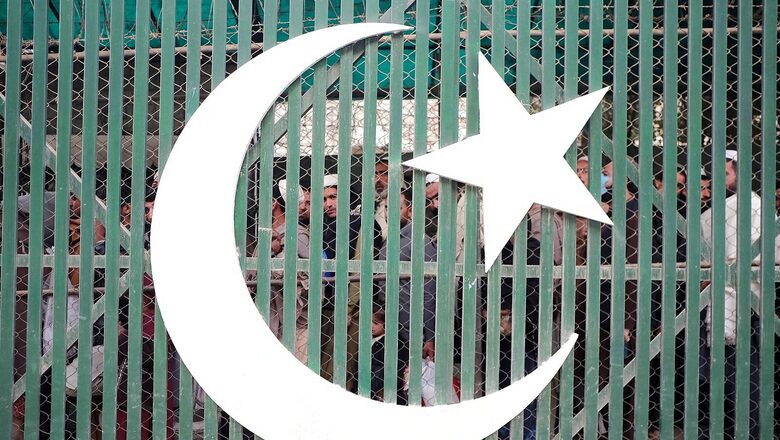
views
Pakistan’s founder Muhammad Ali Jinnah wanted to make his country a secular nation but started its journey on the wrong path by pushing tribal people and soldiers to attack India just a month after his nation’s creation. Jinnah’s expansionist designs put Pakistan on a dangerous path of radicalisation and militarisation. For Jinnah, dialogue with India on Jammu & Kashmir was not a concept. He made his country overreliant on its army just after its formation to achieve this nefarious goal. Soon, the army became the driver of the nation, effectively killing its civilian government from the power corridors. Pakistan was converted into an Islamic nation with its army feeding on the anti-India narrative that still continues.
1947 – WHEN IT ALL BEGAN
Pakistan was carved out of India as an independent nation on 14th August 1947. Before it, the country was a geographical non-entity. If Pakistan has had any historical context, it was in the larger Indian perspective till 14th August 1947. The creation of Pakistan was a demand supported and opposed in colonial India. So, even after independence, the roots of the new nation were attached to India.
The widespread post-partition violence could have been a lesson for both countries to come together at the dialogue table to choose the path of peace and progress. Yet Pakistan chose war to begin its independent journey. It engineered a tribal invasion, pushed its regular soldiers with them, and launched a full-scale war against India by attacking Jammu & Kashmir on October 22, 1947. The war finally ended with a ceasefire in July 1949 with Pakistan illegally occupying a part of the state.
1965 WAR – TREACHERY OF THREE PAK OPERATIONS
Pakistan’s next backstabbing came in 1965 when it again attacked India. Under the false impression that India was a weakened military force after Chinese advances in the 1962 war, it attacked the Rann of Kutch in Gujarat on 24th April 1965 and penetrated six to eight miles inside and launched ‘Operation Desert Fox’.
It attacked and captured a few Indian border posts and deployed a tank regiment to countercheck the Indian offensive. After Britain’s mediation, both countries signed the ‘Kutch Agreement’ on 1st July 1965. It seemed peace had returned with Pakistan’s withdrawal, but the country was planning something more sinister.
It soon launched ‘Operation Gibraltar’ in Jammu & Kashmir. The wave of infiltration started in August 1965 and soon there were 30,000 trained infiltrators from Pakistan deployed in different parts of the state. Pakistan wanted to isolate and capture Srinagar but failed miserably. Locals did not support its forces, making their presence on Indian soil vulnerable. The Indian Army instantly launched a counteroperation. It sealed the Kashmir Valley and quickly overturned the Pak dominance by winning and recapturing the Kargil heights, Haji Pir Pass, and key positions in the Kishanganga Bulge.
Pakistan launched yet another attack or ‘Operation Grand Slam’ on 1st September 1965, after ‘Operation Gibraltar’ failed. The aim was to capture Akhnoor Sector and isolate Indian troops in Naushera, Rajouri and Punch and capture the Jammu Division. The Indian Army, along with the Indian Air Force, decimated Pakistan’s advances. The counter-offensive, across the international border in J&K, Punjab, and Rajasthan, started on 6 September 1965.
1971 WAR – BACKSTABBING THAT TOOK A HEAVY COST
East Pakistan or East Bengal was a Bengali-speaking mixed population base dominated by Muslims. They were culturally and traditionally different from West Pakistan and it was only a matter of time before they demanded a separate nation.
The landslide victory of the Awami League led by Sheikh Mujibur Rahman in the 1970 general elections was denied by the Pakistan army and Zulfiqar Ali Bhutto’s Pakistan Peoples Party (PPP). They did not want anyone from East Bengal to lead West Pakistan. It led to widespread protests in East Pakistan.
West Pakistan launched a ruthless crackdown to kill these protests and thwart voices of independence. The horror that started on 25th March 1971 only grew more violent. Thousands of Bengalis were massacred in ‘Operation Searchlight’. The reign of terror was so deep that at least 10 million people, with multitudes from paramilitary forces of East Bengal Rifles and East Pakistan Rifles, took refuge in different border states of India.
These eight months were quite a difficult phase for India, not an economic superpower then. A rush of refugees destabilised the administrative structure of the areas they were in. The economic cost was huge. It also came with the Pakistan army regularly transgressing Indian boundaries to engage with its rebel soldiers who organised themselves as members of the Mukti Bahini or the Bangladesh Liberation Force.
India efficiently managed the refugee crisis while not taking any hostile action against Pakistan. It asked Pakistan to create conditions favourable for refugees to return to East Pakistan as a process of diplomatic dialogue.
But Pakistan had other designs. It again backstabbed and attacked India on 3rd December 1971, starting the 1971 India-Pakistan war that led to the formation of East Pakistan or East Bengal as an independent country Bangladesh. Pakistan saw a humiliating defeat with 93,000 of its regular and paramilitary men surrendering on 16th December 1971.
1999 KARGIL WAR – PAKISTAN AGAIN MISCALCULATES
Indian Prime Minister Atal Bihari Vajpayee visited Pakistan in a Delhi-Lahore bus on February 19, 1999. The “bus diplomacy” was part of confidence-building measures. Its origin lies in the meeting of PM Vajpayee and Pak PM Nawaz Sharif during the 1998 Colombo SAARC Summit. PM Vajpayee boarded the bus, called Sada-e-Sarhad (Call of the Frontier), at Amritsar airport in its inaugural run.
Just three months later, we were staring at the Kargil War. Like 1965, Pakistan again targeted Jammu & Kashmir and captured important strategic heights in the Kargil district. The conflict that started in May 1999 lasted 11 weeks with India’s victory on 26th July 1999 in ‘Operation Vijay’. It was the fourth big backstabbing event from Pakistan that again saw a similar outcome, a humiliating loss to the country, like the 1965 and 1971 wars. Pakistan again failed to calculate India’s military capability and its counter-response.
2001 – FROM PAK ARMY TO PAK TERRORISTS
As part of its CBM effort, India invited Pakistan President General Parvez Musharraf to the peacebuilding Agra Summit. Musharraf was the Pak army chief during the Kargil War. The summit, between July 14 and 16, 2001, was seen as a good beginning point to restart ties.
Yet, just four months afterwards, India saw one of the worst terror attacks on its soil when Pakistan-based terror groups, LeT and JeM, attacked the Indian Parliament on 13th December 2001. The attack saw nine Indians killed and targeted India’s very bastion of the democratic spirit. All the five terrorists killed were Pakistani nationals.
2008 – JOINT ANTI-TERROR MECHANISM TO TERROR ATTACK
The 2008 Mumbai terror attack was yet another incident when we were deceived by Pakistan. In September 2008, Pakistan President Asif Ali Zardari and Prime Minister Manmohan Singh issued a joint statement after their meeting on the sidelines of the UNGA in New York. The main aim was an effort towards the full normalisation of India-Pakistan ties. Several trade routes were initiated with a focus on stabilising ceasefire norms. A special meeting to develop a ‘Joint Anti-Terror Mechanism’ was also planned.
On 26th November 2008, India saw the deadliest terror attack on its soil. 10 Pakistani terrorists targeted India’s financial capital, killing 174 people including 26 foreign nationals. The multiple targets of the attack included Mumbai’s main railway station, Chhatrapati Shivaji Maharaj Terminus, two of its most prominent hotels, the Taj Mahal Palace Hotel and the Oberoi-Trident, and a Jewish community centre, Nariman House.
14 months after the Mumbai attacks, India offered Pakistan foreign secretary-level talks and communicated it on 10th February 2010. Two dates, February 18 and 25 were proposed. Pakistan was silent on these proposed dates.
And just two days after the proposal, on 13th February 2010, Pune’s famous German Bakery saw a bomb explosion killing 17 people and wounding 64. The terror attack was a Pakistan design, by LeT, and was implemented by India’s homegrown terrorist outfit Indian Mujahideen (IM).
One year after the German Bakery blast, foreign secretaries of India and Pakistan met in Bhutan’s capital city Thimphu, on the sidelines of the SAARC meeting, on 6th February 2011. The details of the meeting were made public on 10th February 2011. Then Foreign Secretary of India, Nirupama Rao, and her Pakistani counterpart Salman Bashir agreed to hold talks on all issues that were on the dialogue table before the 26/11 terror attacks.
Mumbai saw serial blasts just four months later. Three bomb blasts within 12 minutes, on 13th July 2011, left 27 dead and over 127 injured. Believed to be pushed by Pakistan-based handlers, IM was blamed for the strike.
BACKSTABBING AFTER UFA
PM Narendra Modi and Pakistani PM Nawaz Sharif met in the Russian city of Ufa on 10th July 2015. A historic joint declaration was released after the meeting which made “terror” the core issue of the India-Pakistan dialogue process. The joint statement didn’t mention Kashmir. It was a first in India-Pakistan diplomatic history, but Nawaz Sharif was heavily criticised for it back home.
The result? Just 16 days after it, India saw the Gurdaspur terror attack on 27th July 2015. Three terrorists, believed to be from Pakistan, killed seven people including the superintendent of police. Terrorists targeted a bus and a police station. Gurdaspur is a border town and shares a boundary with Pakistan.
25th December 2015 came again as a surprise with PM Modi’s Lahore stopover while on his way back from Afghanistan’s capital city Kabul. India still believed that its civilian government, headed by Nawaz Sharif, could be given a chance despite the Pak army’s terror tentacles and its terror extensions in India and despite the venomous anti-India rhetoric of its radical establishments.
The sudden visit to wish Sharif on his 66th birthday and to attend his granddaughter’s wedding was a big diplomatic signal, but Pakistan failed to respect it. Just seven days later, on 2nd January 2016, India saw the Pathankot terror attack. The Pathankot air force station was attacked by five JeM terrorists from Pakistan. Like Gurdaspur, Pathankot also shares a border with Pakistan. The terror attack by Pakistan-based JeM terrorists killed seven personnel.
KARTARPUR CORRIDOR – BETRAYAL EVEN ON FAITH
Kartarpur in Pakistan is where Guru Nanak spent the last 18 years of his life. It is symbolised by the Gurdwara Sri Kartarpur Sahib, the final resting place of the founder of Sikhism. The place is religiously and spiritually connected to the Dera Baba Nanak shrine, located in the district of Gurdaspur, in India’s Punjab state.
The Kartarpur Corridor links these two places and offers visa-free travel to devotees. India sent two of its union ministers, Harsimrat Kaur Badal and Hardeep Singh Puri, for the corridor’s groundbreaking ceremony on 25th November 2018. Just two months on, 44 CRPF personnel were killed in a dastardly suicide attack by a JeM terrorist in the Pulwama district on 14th February 2019.
The opening of the Kartarpur Corridor on 9th November 2019 was welcomed by India and other countries, but Pakistan used this religious and spiritual connection to push separatist sentiments into India. The official video by Pakistan’s Ministry of Information and Broadcasting had posters of three slain Khalistani separatist leaders Jarnail Singh Bhindranwale, Major General (dismissed) Shabeg Singh, and Amrik Singh Khalsa.
Read all the Latest India News here











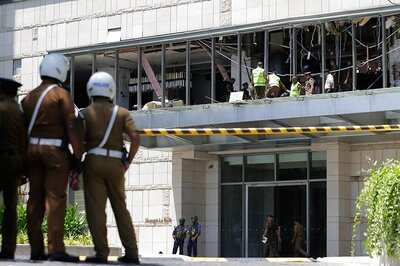
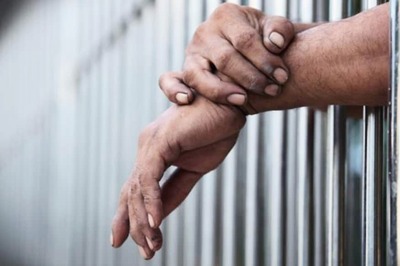



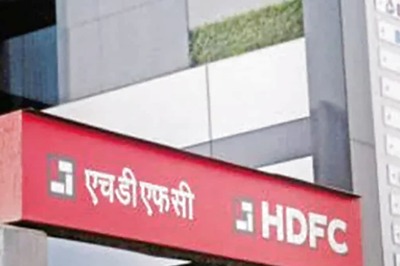
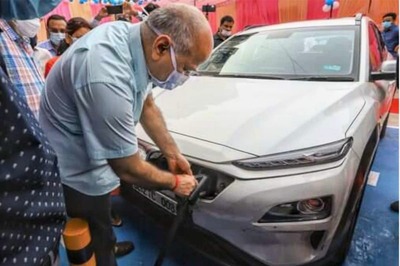
Comments
0 comment